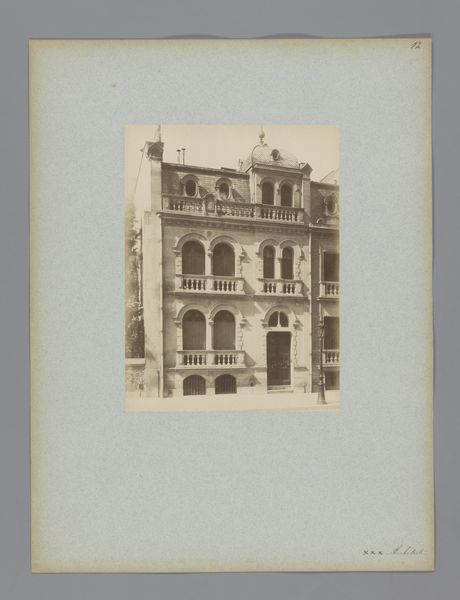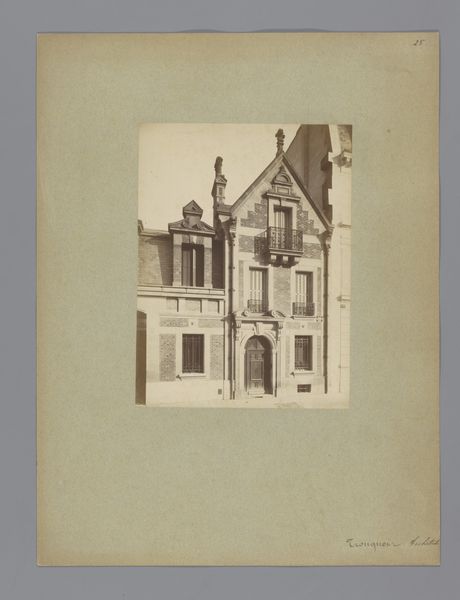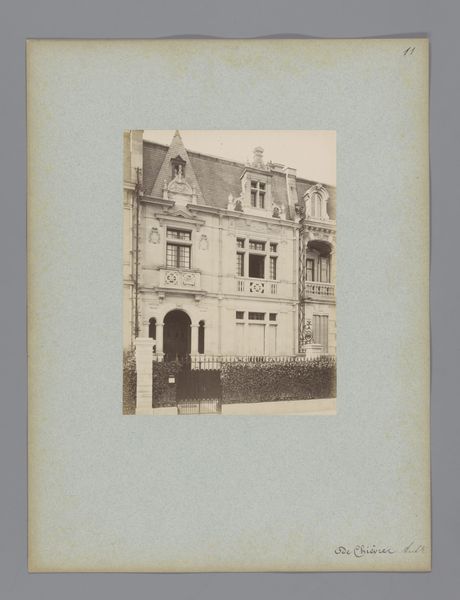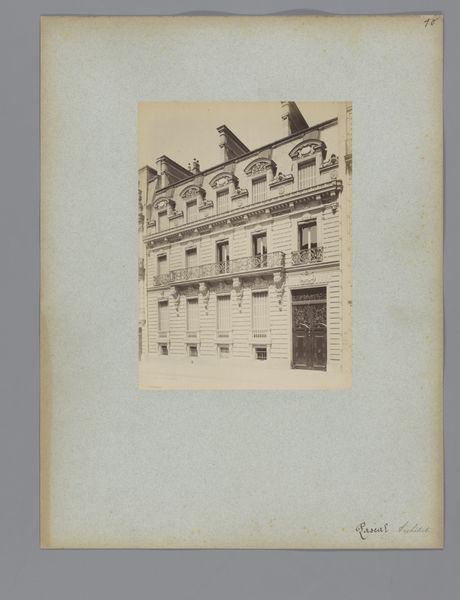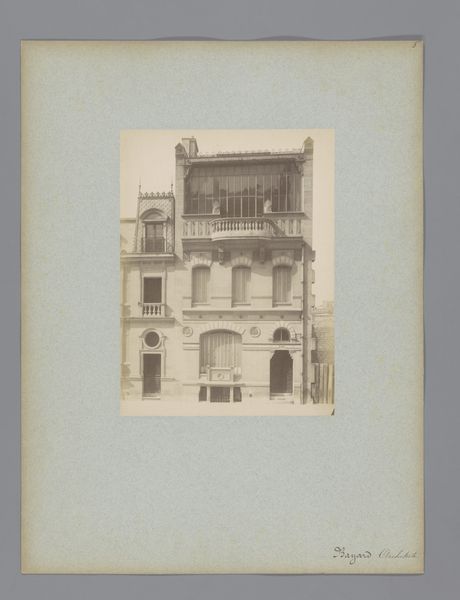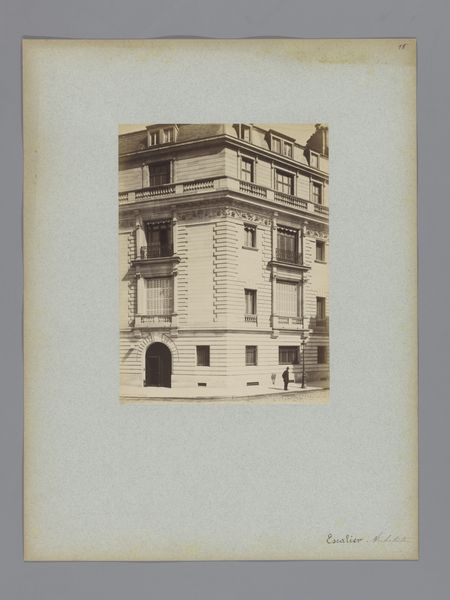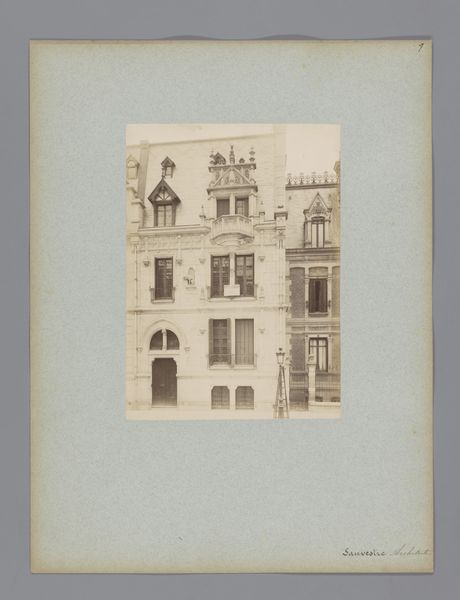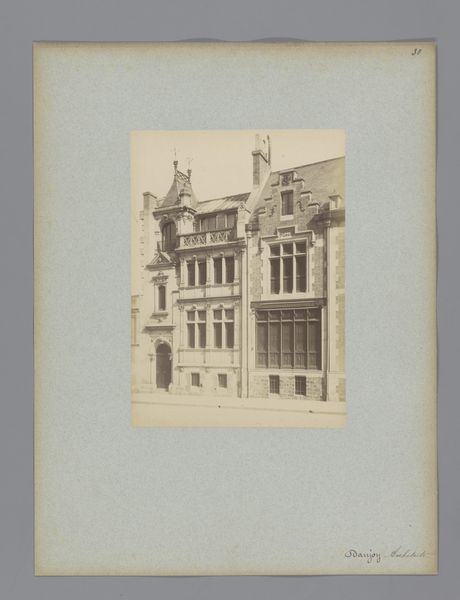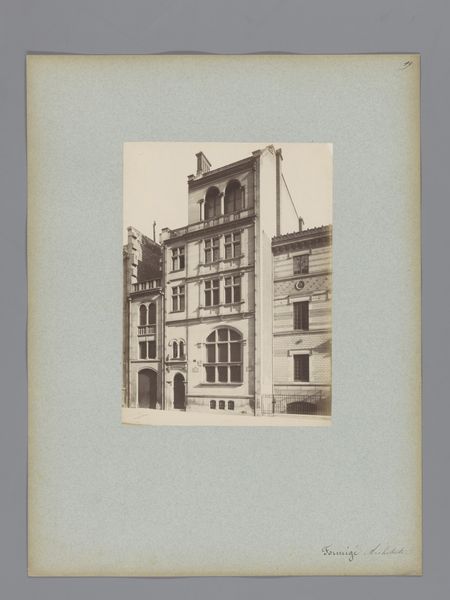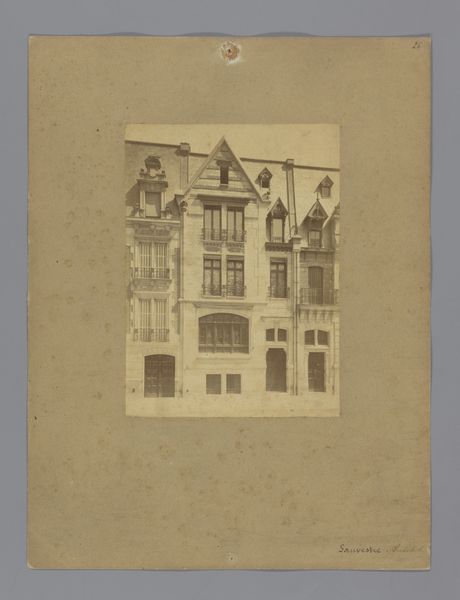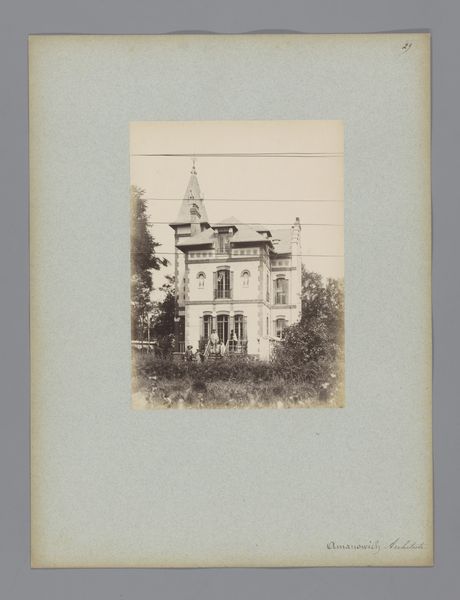
print, photography
# print
#
photography
#
cityscape
#
building
Dimensions: height 226 mm, width 165 mm
Copyright: Rijks Museum: Open Domain
Editor: Here we have "Façade van een woonhuis in Parijs" – that's "Facade of a house in Paris" – a photograph dating from before 1880, credited to Lampué et Cie. The townhouse depicted looks so dignified, yet somehow quite closed off from the street behind its tall fence and shutters. What's your take on it? Curator: It's a fascinating glimpse into the Parisian urban landscape of that era. Think about the Second Empire, the reign of Napoleon III. This photograph isn't just about architecture; it speaks to a larger project of Haussmannization. Notice how the building's design, while elegant, contributes to a sense of order and control. Does the building’s seeming duplication feel… strategic? Editor: You mean like these houses might have sprung up at the same time, during a building boom, or they were styled to match each other on purpose? Curator: Exactly. It's important to consider who these spaces were designed for and, perhaps more importantly, who they exclude. The rising bourgeoisie, eager to display their newfound status. Photography itself was becoming more accessible, playing a key role in documenting – and celebrating – this transformation of Paris. So, we are looking at a slice of photographic documentation of class. Editor: So the photograph’s function is just as important as the building’s? That is, it presents a specific, class-oriented view of the city for public consumption? Curator: Precisely. And the very act of documenting these façades contributes to the construction of an image, a public face, of a modern and ordered Paris. This controlled image then could encourage social and economic activities and behaviors that re-inscribe these structures in the landscape. What do you make of its modern resonance? Editor: I never considered the social politics inherent in urban photography! It makes me want to explore more of these cityscapes with a new perspective. Thanks! Curator: My pleasure. It is crucial to question the accepted norms of how urban landscapes are constructed and then presented for public review.
Comments
No comments
Be the first to comment and join the conversation on the ultimate creative platform.
